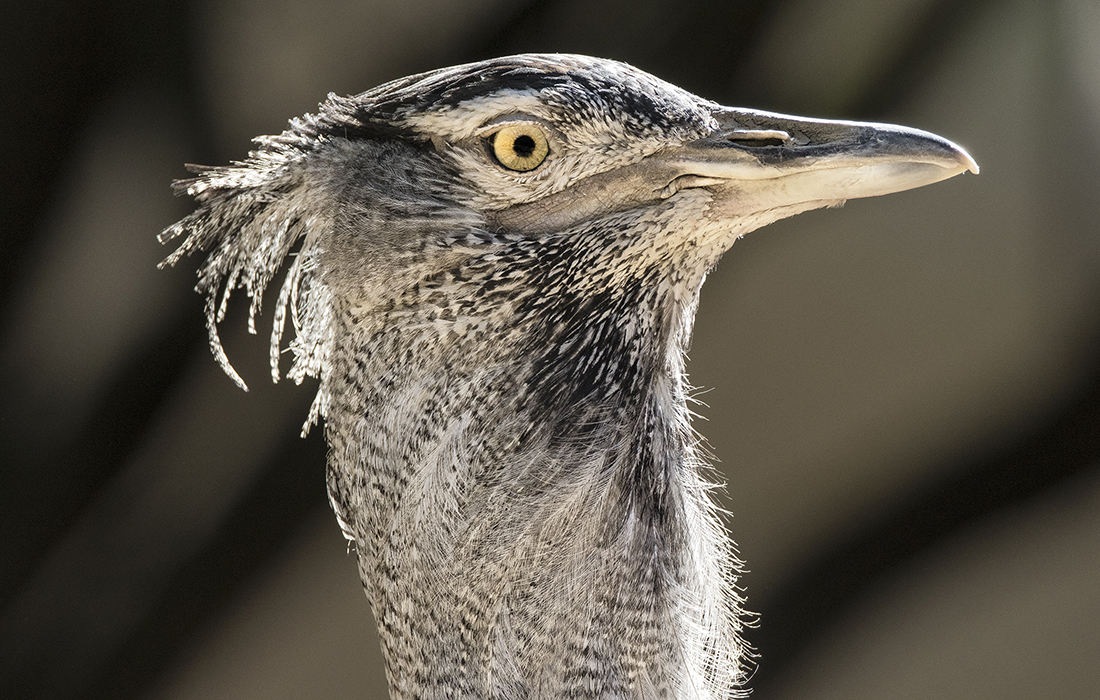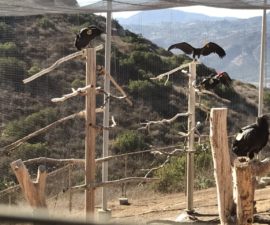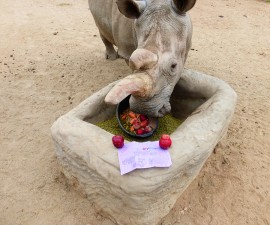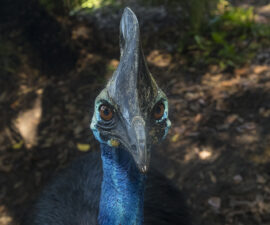BY Eston Ellis
Photography by Ken Bohn
They are big. They can also be loud—and they will not be ignored. They are kori bustards Ardeotis kori, the heaviest flying birds in Africa.
Kori bustards are an iconic species in southern and eastern Africa, explained Michael Mace, curator of birds at the San Diego Zoo Safari Park. “This is a species people will often see if they are on safari there.” However, if you live in the United States, you are less likely to see one. The Safari Park has had kori bustards since the 1970s, but few other zoos do.
Weighing as much as 42 pounds, standing nearly 5 feet tall, and boasting a wingspan of up to 9 feet, kori bustards are easy to spot. Males are about 30 percent larger than females, but both have a brown back and tail, with white and black spots near the front underside of their wings. Kori bustards are omnivores, feeding on insects, seeds, berries, snakes, mice, and lizards—and they sometimes snack on acacia tree gum.
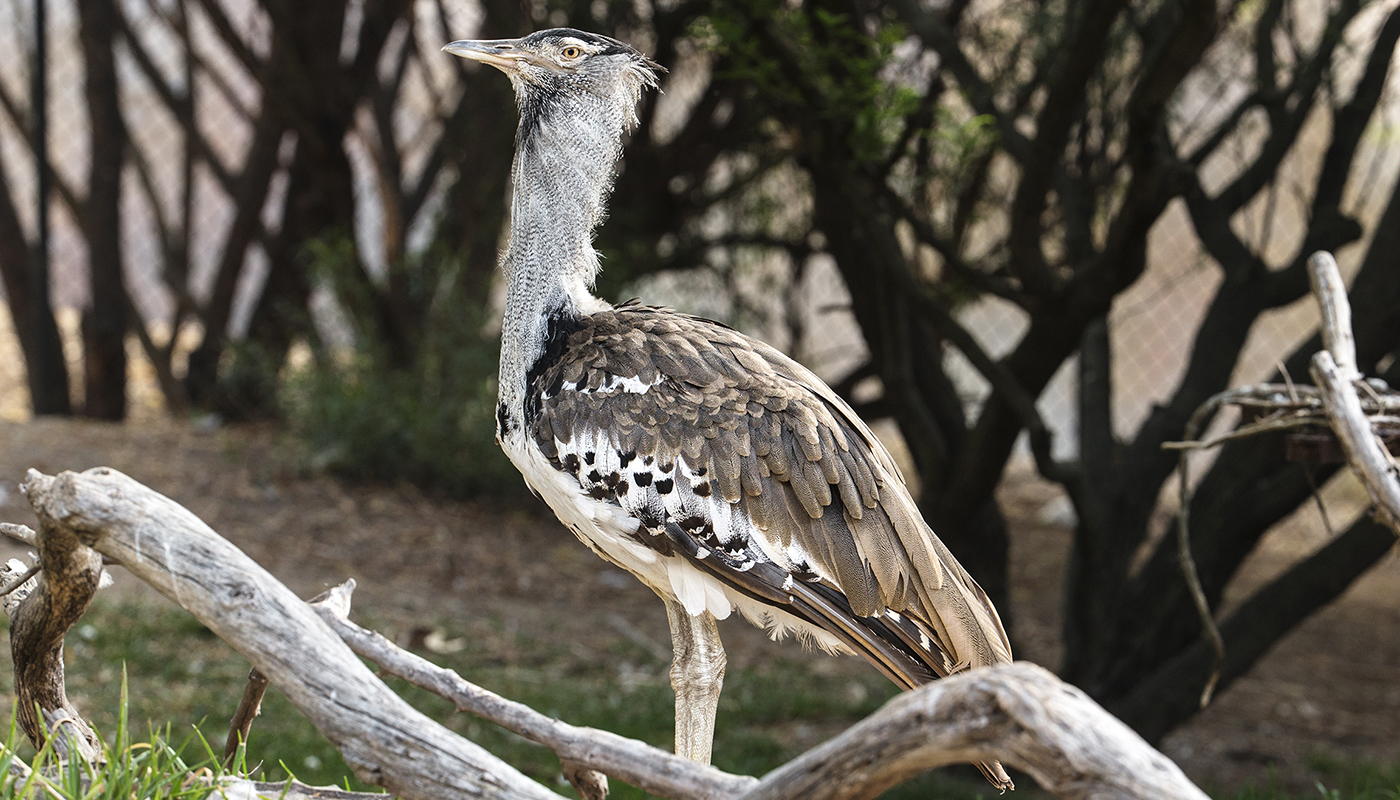
Walk on
In their native habitat, kori bustards live in grasslands and wooded savanna. They have long legs and surprisingly small feet, with three forward-facing toes that are built for walking and running. Their elongated legs carry them effortlessly through tall grass—and they prefer to walk rather than fly. “They are very terrestrial, spending most of their time on the ground,” said Andrew Stehly, an animal care supervisor at the Park. “Flying is used more as a means of escape.”
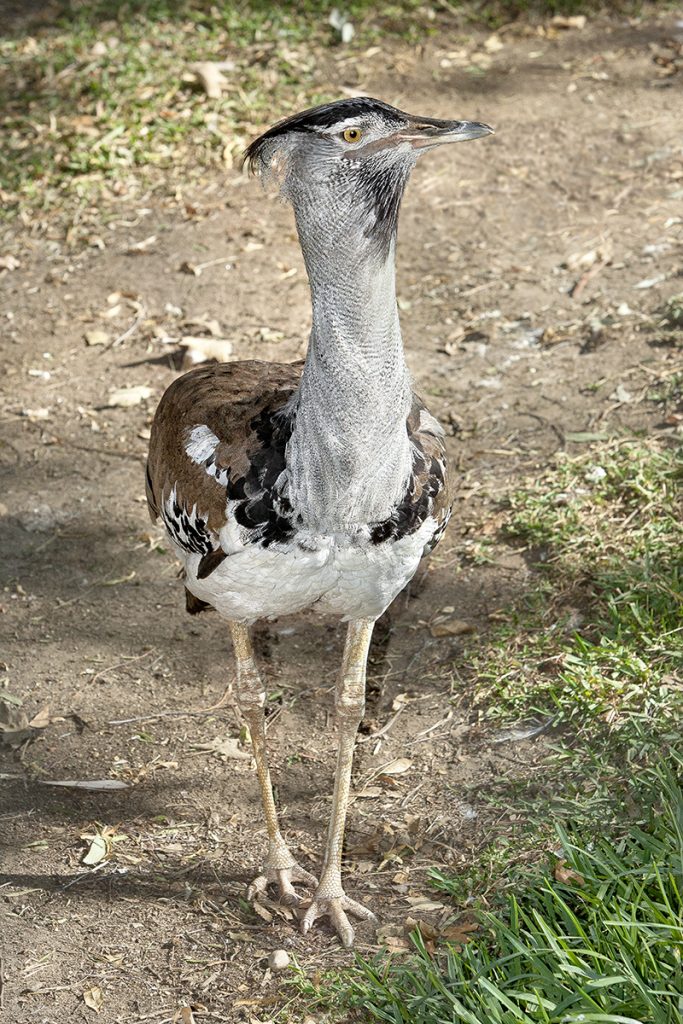
BORN TO STRUT
Big kori bustards, the heaviest flying birds in Africa, have long legs and surprisingly small feet, with three forward-facing toes built for walking and running. The strutting male puts on an impressive mating display (below).
When they do choose to fly, it’s an impressive sight. “Getting into the air takes so much power,” said Jenny Tibbott, a senior keeper at the Park. Kori bustards have remarkable strength, and their long flight feathers have huge shafts to provide the lift needed to keep this big bird airborne.
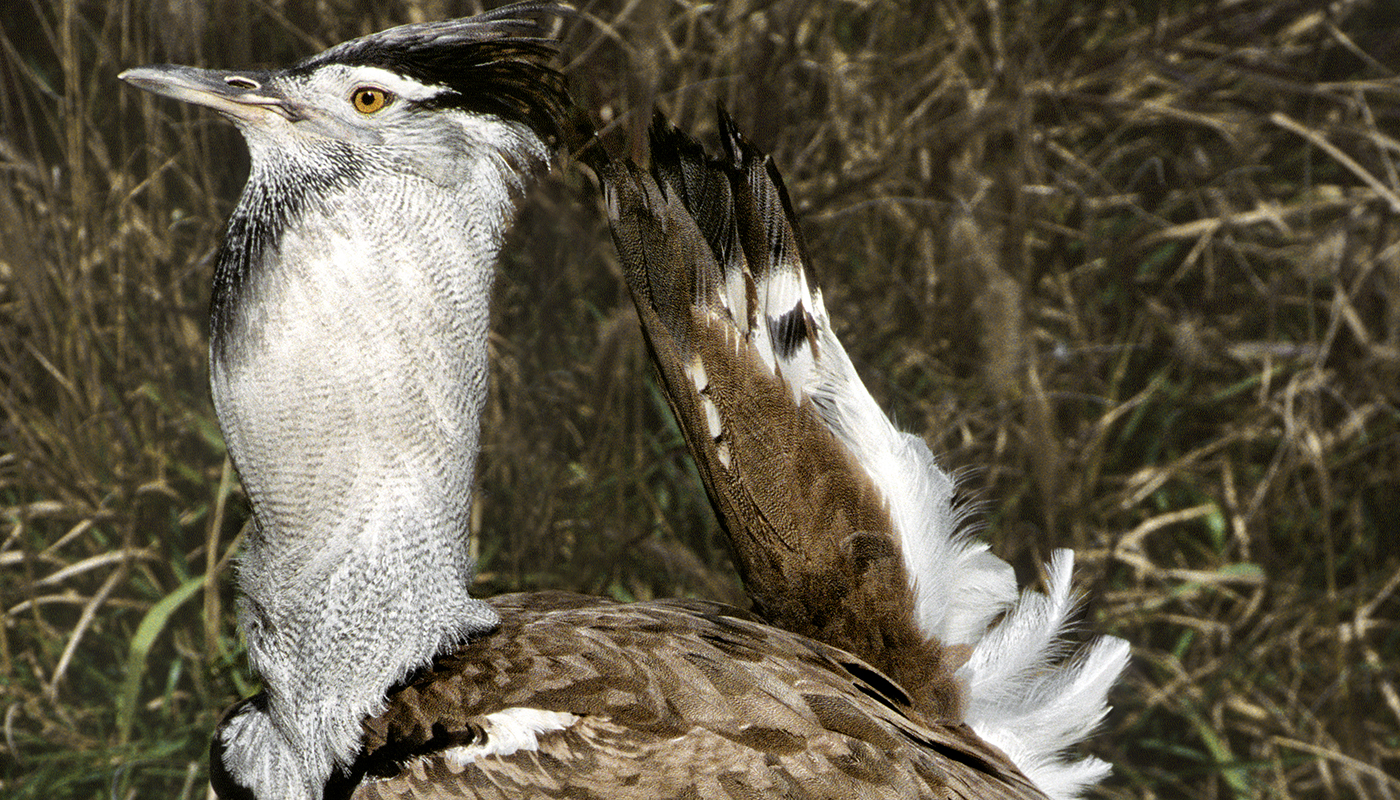
You Can’t Look Away
Kori bustards are eye-catching when they aren’t trying to attract a mate, but during mating season, the males put on a remarkable show. In the wild, males gather in a loosely formed group called a lek, competing with each other for the best display to attract a female. The male inflates his esophagus until it balloons to four times its size, puffs up the feathers on his chest, raises his crest of head feathers, lifts his tail feathers to reveal the white feathers underneath, points his wings to the ground, and struts. “It looks as if he has just been turned inside out,” Michael said. The resulting display is visible to birds more than one-half mile away.
Even if you missed that display, you couldn’t ignore the male kori bustard’s mating vocalization. It’s a low, deeply resonating bass sound, called booming. “Our birds start booming in November and December,” Jenny said. “You can feel it in your whole body, down to your core—it carries quite a distance.”
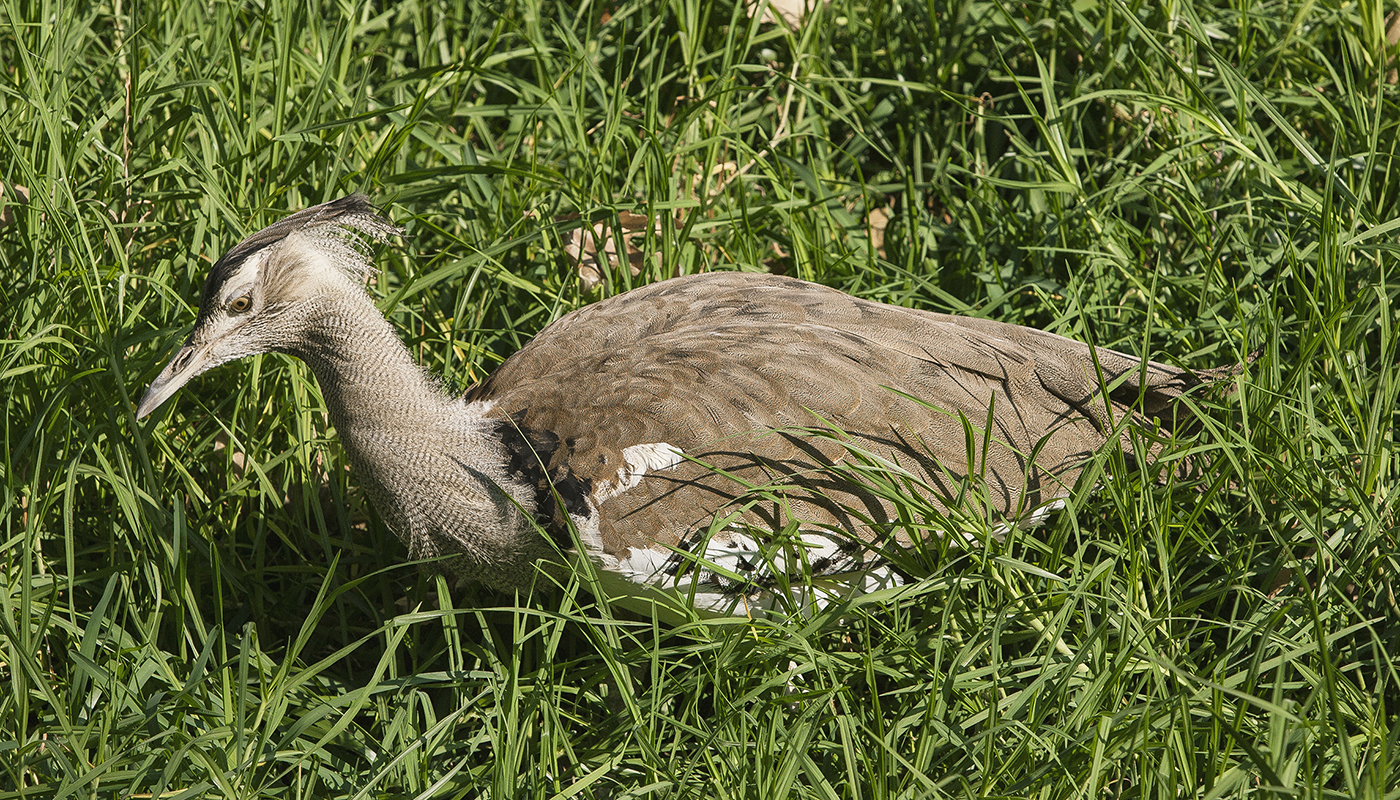
Ladies’ Choice
Females show no obvious interest in the males’ displays, until one coyly decides to lie down near her chosen one. The male will peck gently at her head for a few minutes, followed by mating, and then the two go their separate ways.
“It’s the female’s choice, all the way,” Jenny said. “When it comes to mating, the males have to wait for her to decide.” Kori bustards do not form pair bonds, and a male that has just mated may try to interest another female with his elaborate display.
Males do not participate in chick rearing. For nesting, the female makes a shallow scrape in the ground, and lays one to two large, blotchy, tan-to-olive-colored eggs. They hatch after about four weeks, and the precocial chicks fledge in about five weeks.
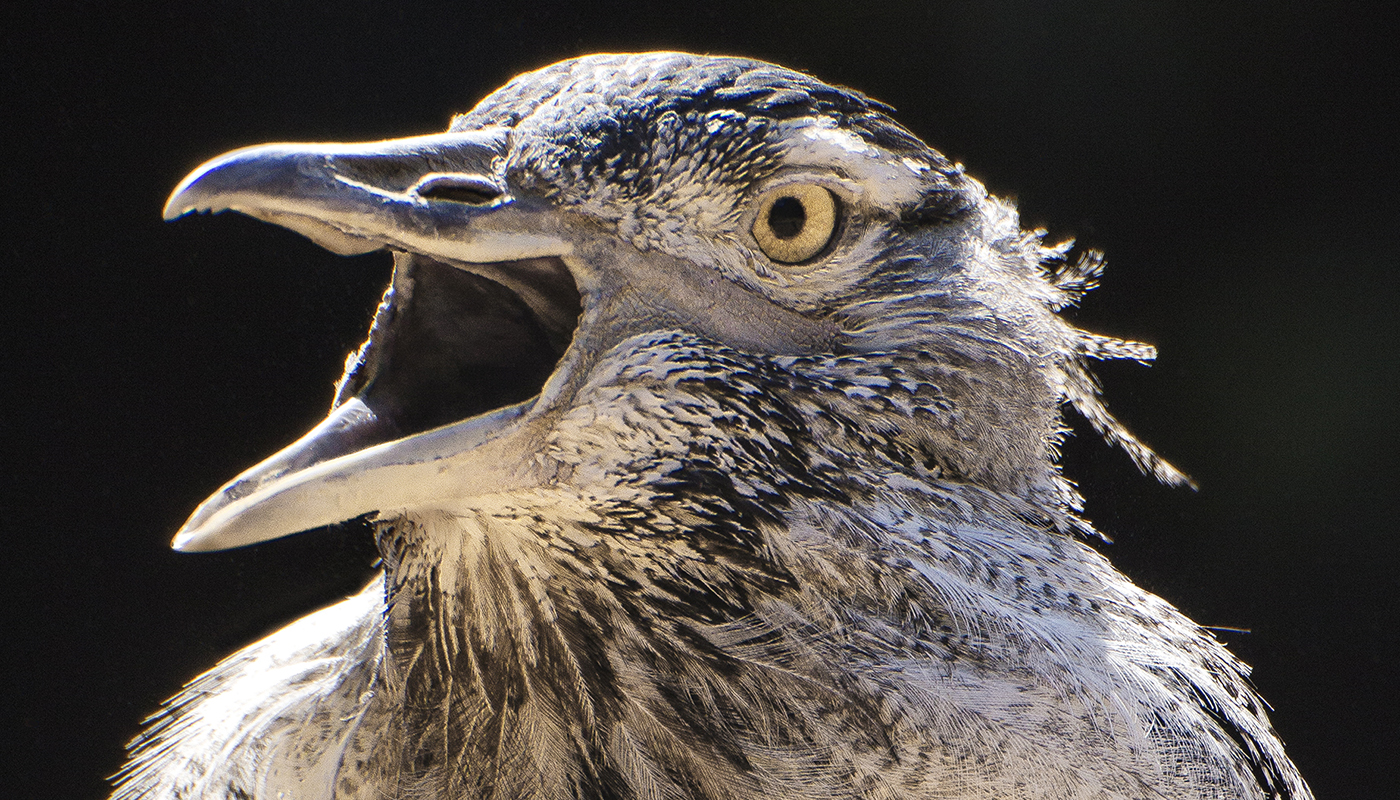
When 585 Met 588
At the Safari Park, kori bustards share an exhibit in Okavango Outpost with secretary birds and storks. There are currently two adult bustards in the exhibit: female 588 and male 585. “He’s been in our collection for 20 years, but in a subordinate role, until now,” Jenny explained.
In the past, when the males were in lek mode, 585’s role was that of a “wingman”—his display only served to get the other males excited enough to compete with displays. When it came to romance, 585 always came on too strong and was quickly rejected. “If the female is submitting, the male responds with gentle head pecks; but his were a little too hard,” Jenny said.
However, when 585 met 588, a 13-year-old female that arrived at the Park in 2014, it seemed to be a match made in heaven—or at least in the kori bustard studbook. “When we brought in this female, I thought this is really the one for him,” Jenny said. “She’s a boss: she’s the dominant animal in this whole enclosure. She’ll challenge anyone, from one of the big storks to a secretary bird.”
There was instant kori chemistry! “She’s more confident, more tolerant, and can handle his assertiveness,” Jenny said. After they met and mated, 588 laid her first fertile eggs ever, and these were the first eggs 585 had ever sired. “He’s a wild-collected male, with a lot to add to kori bustard genetics, so we are super excited,” Jenny said.
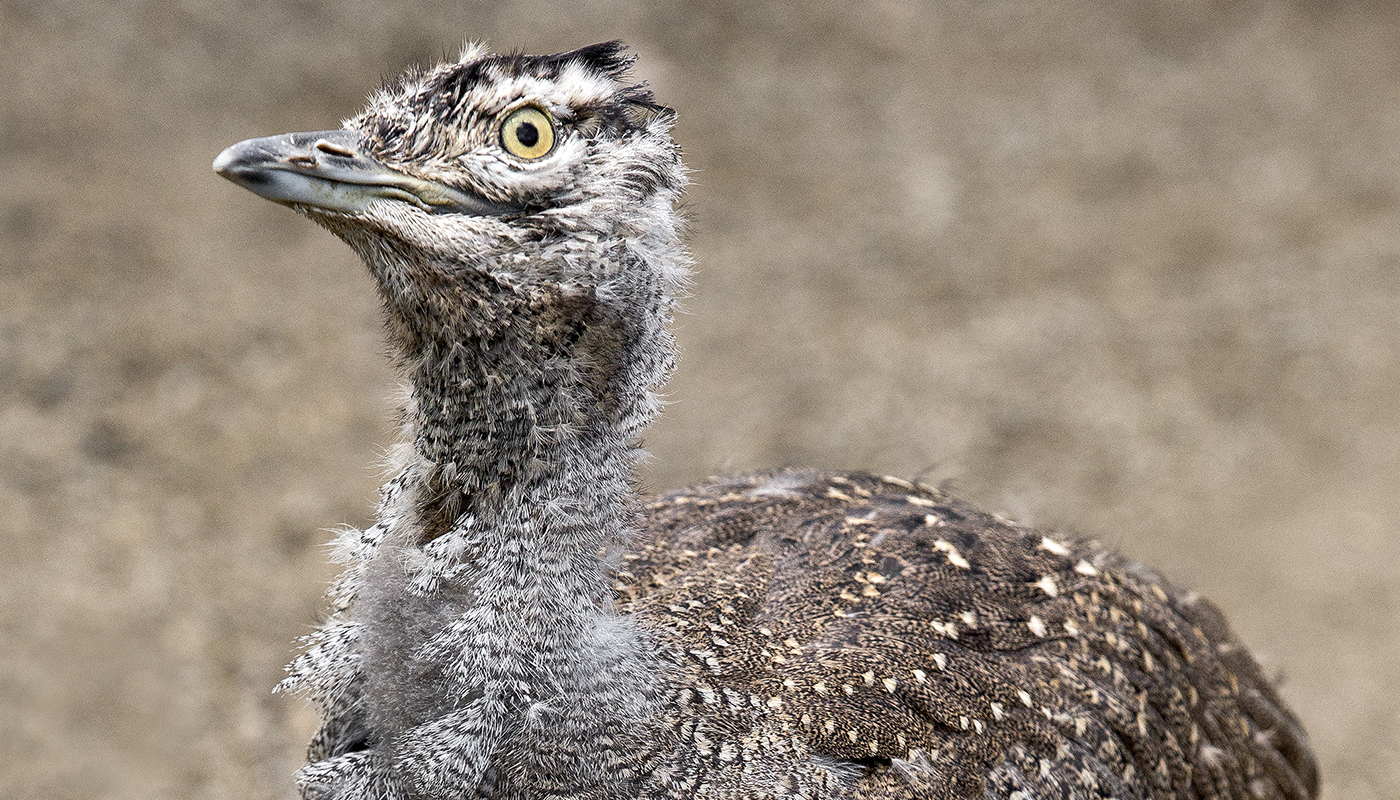
 Kori bustards have been illegally hunted for their feathers, used to make fly-fishing lures for salmon anglers. However, a conservation program that provides anglers with molted feathers from birds at zoos has helped decrease poaching in the wild.
Kori bustards have been illegally hunted for their feathers, used to make fly-fishing lures for salmon anglers. However, a conservation program that provides anglers with molted feathers from birds at zoos has helped decrease poaching in the wild.
Kori survival
It’s uncertain how many kori bustards still exist in the wild. They are listed as Near Threatened on the International Union for Conservation of Nature (IUCN) Red List. But “Wild kori bustards are continuing to decline at an alarming rate,” Michael said. One major contributor to their population decrease is collisions with high-voltage power lines. Despite their protected status, they are hunted as meat, and increased urban development has also affected their numbers. “Koris don’t do well in disturbed areas,” Jenny said. “They don’t like people, and they don’t do well with heavy equipment. They need undisturbed grasslands.”
While adult kori bustards can be prey for predators like leopards, cheetahs, hyenas, and jackals, eggs and chicks are even more vulnerable. One study estimated that 82 percent of kori bustard chicks do not survive their first year.
The Safari Park participates in the Association of Zoos and Aquariums’ Species Survival Plan (SSP) program for kori bustards and has hatched 15 chicks since 2002. As part of the breeding program, when a kori bustard female lays an egg in the Safari Park exhibit, it is replaced with a dummy egg, and the real egg is taken to an off-exhibit area for hatching. The hatched chicks are hand raised, taking bits of watermelon, crickets, vegetables, and pellets from tweezers. Not long after hatching, kori bustards start walking. Keepers take the chicks on walks six times a day, and the koris closely follow the keepers’ moving legs.
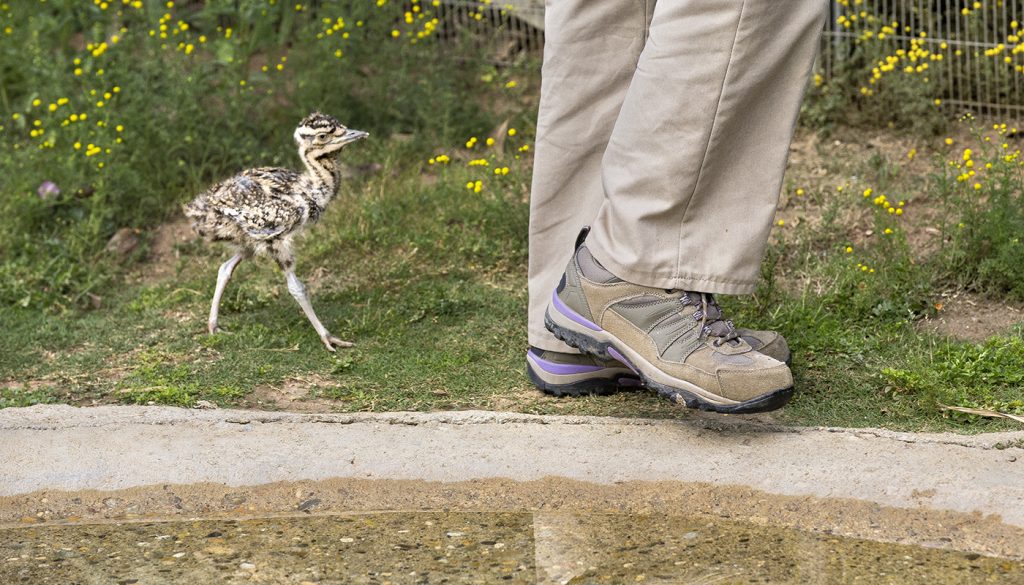
FOLLOW THE FEET
Soon after chicks hatch from incubated eggs at the Safari Park, they go on walks with keepers—
six times a day.
As the chicks grow, they are taken to the Park’s Bird Breeding Center (BBC) until they are almost full grown. There, they meet an adult mentor: a female kori bustard that teaches them what they need to know as adults. “She plays a crucial role in raising chicks,” Jenny said. As adults, the birds are paired by the SSP with potential mates at other facilities.
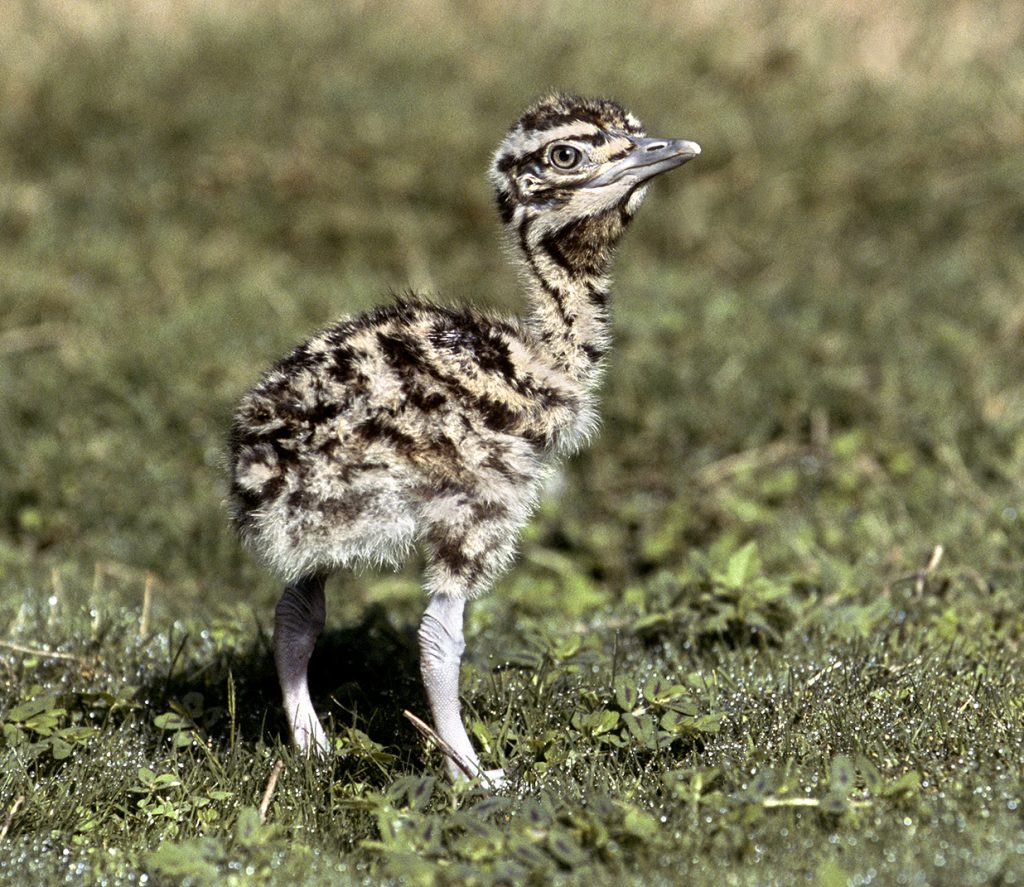
GROWING FAST
A total of 15 kori bustard chicks have hatched at the Safari Park since 2002—including four this year. When those chicks become adults, the Species Survival Plan program will pair them with potential mates at other facilities.
Not many zoos care for kori bustards, because they require a lot of space and specialized care. “Koris need an area free of obstructions, because they frighten easily and may collide with objects and get hurt,” Jenny said. “I wish more facilities exhibited kori bustards, so more people could get to know and appreciate these remarkable birds.”

